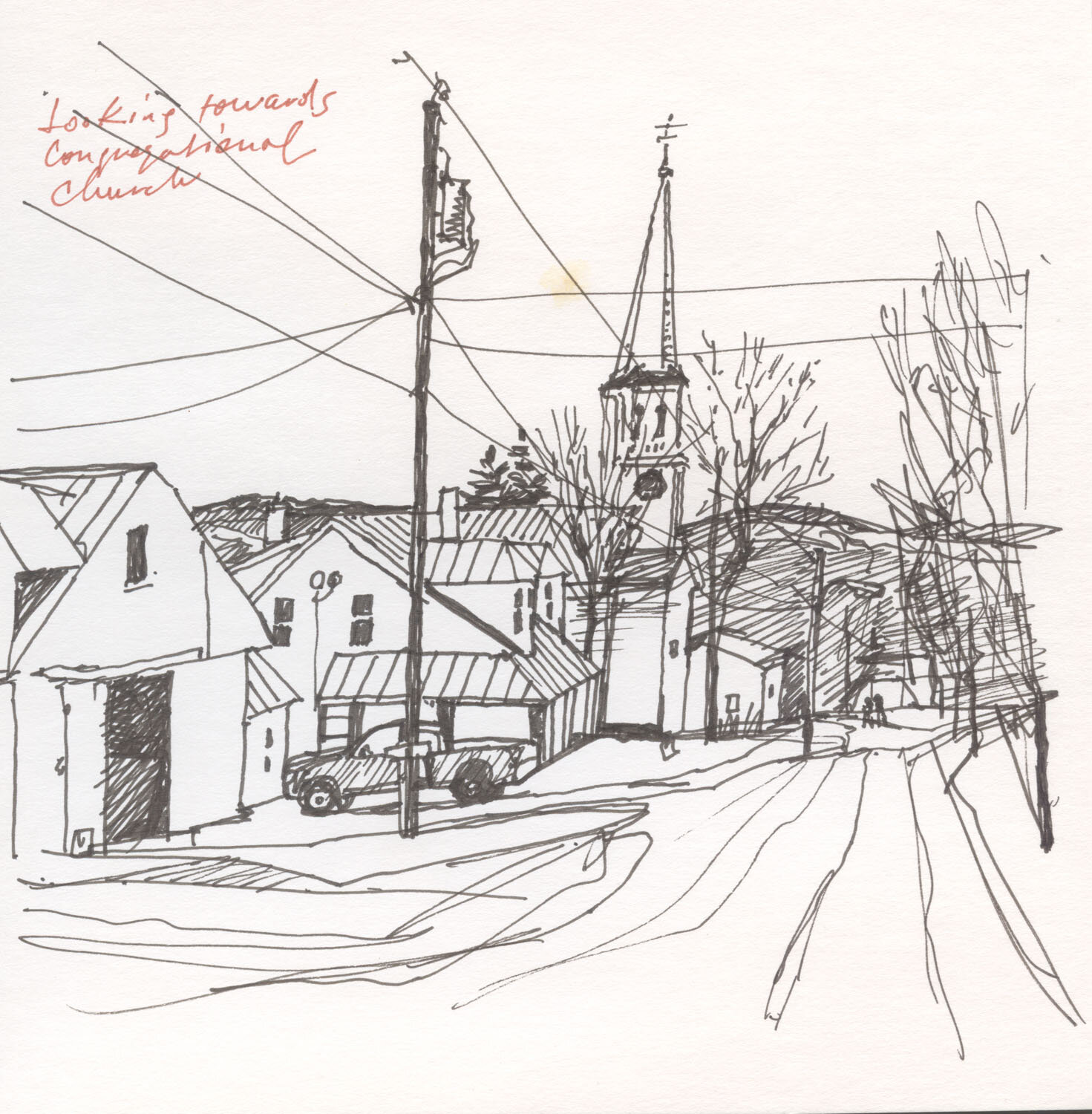Peacham
I once lived in a flat, newly-built suburban area in another state, where the effort to achieve variety had such a modern touch that it resulted largely in uniformity. It lacked wholly the atmosphere which I feel--and generally feel an affection for--in Vermont.
Charles Edward Crane, “Let Me Show You Vermont”
In another post, I went on for a bit about "pretty" being an inadequate and overused word for describing the Vermont landscape, but I have to say that Peacham is pretty. A row of imposingly formal houses gives its Main Street a genteel air, and the town has historically been a vacation spot for "quality" folks in government and academia.
Peacham was also the childhood home of the ungenteel anti-slavery crusader Thaddeus Stevens, on the U.S. Congress's all time honor roll for angry, radical, and principled members.
Peacham sits up high, it's fancy houses poised on a long hill fronted by stone walls. In fact, the town is situated on the ridge that divides Vermont into two watersheds, one side draining into the Connecticut River and the other towards Lake Champlain. It can have the feel of a long street graced by beautiful homes but lacking a center, and until recently the town was without a gathering place. Then in 2014 along came the Peacham Café, which is now a welcoming community hub and “a market for locally-produced food and destination eatery for people from far and wide,” as I found true when I visited for lunch.
The Bayley-Hazen Road runs through Peacham, and its rolling hills and dales make for a great hike or bike ride. It was built during the Revolutionary War to move Benedict Arnold's troops north for an assault on Canada, but was more successfully utilized in getting settlers up to the far reaches of the Northeast Kingdom.
I always feel like it's an adventure through time when I drive through lovely Peacham, and then steer down that narrow, rolling Revolutionary route towards the south, and home.


